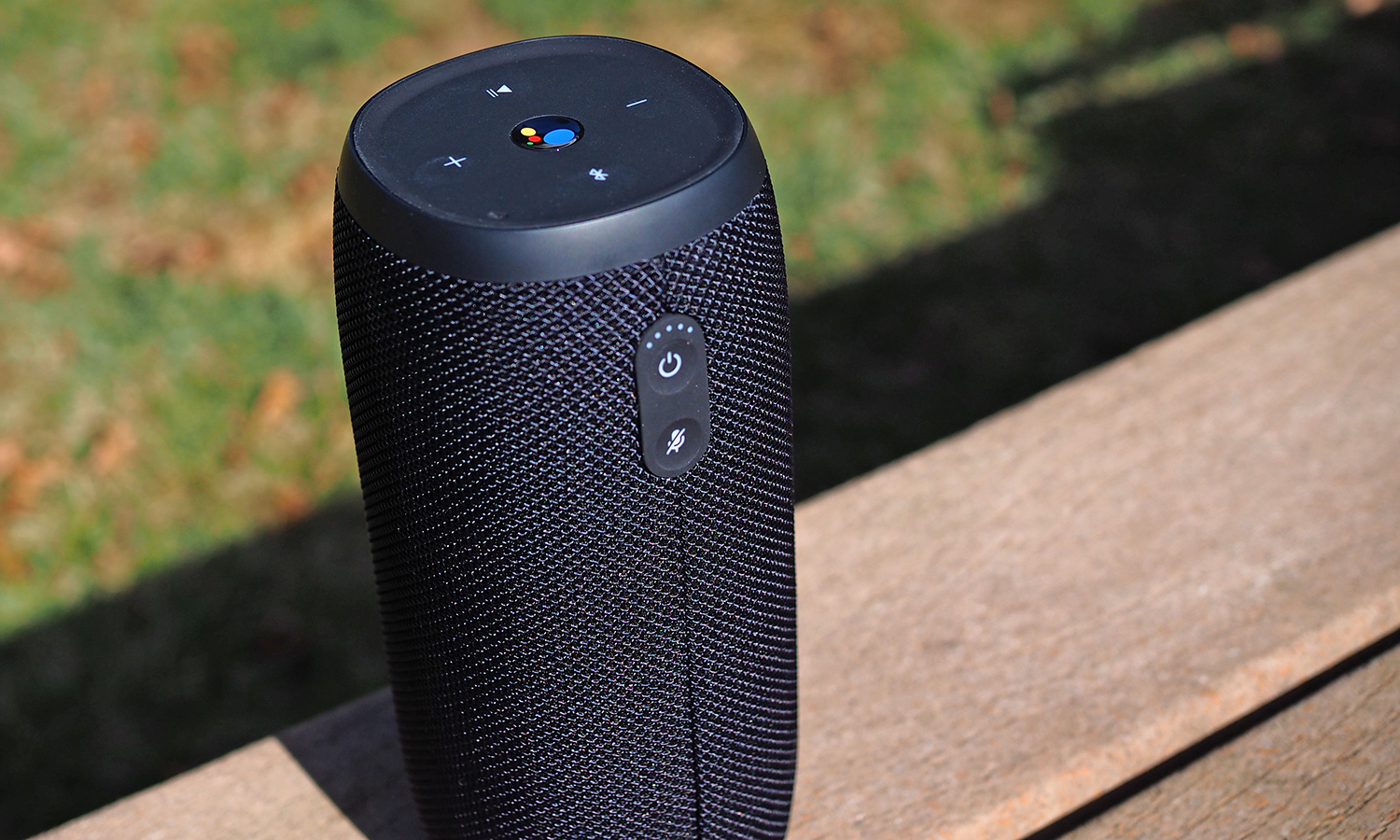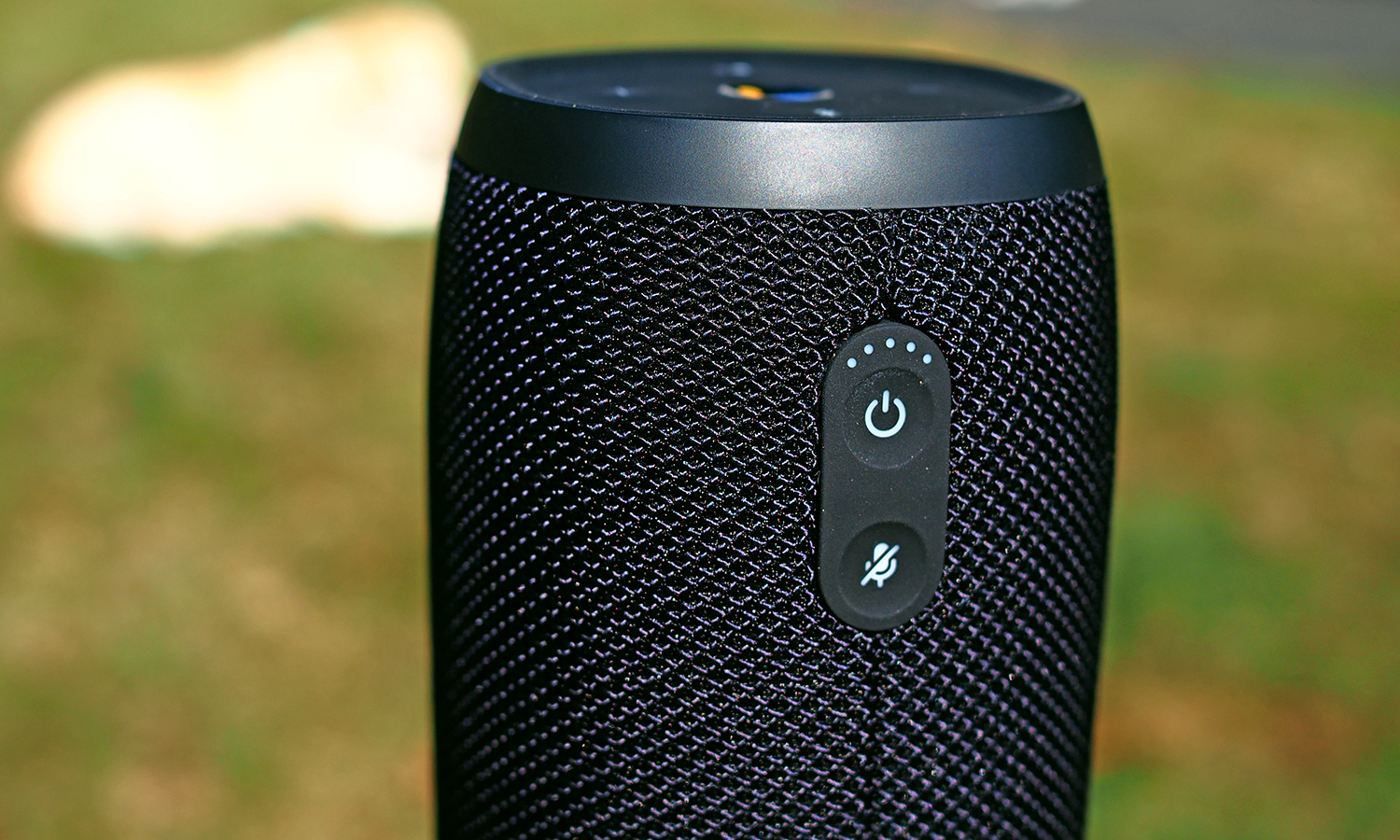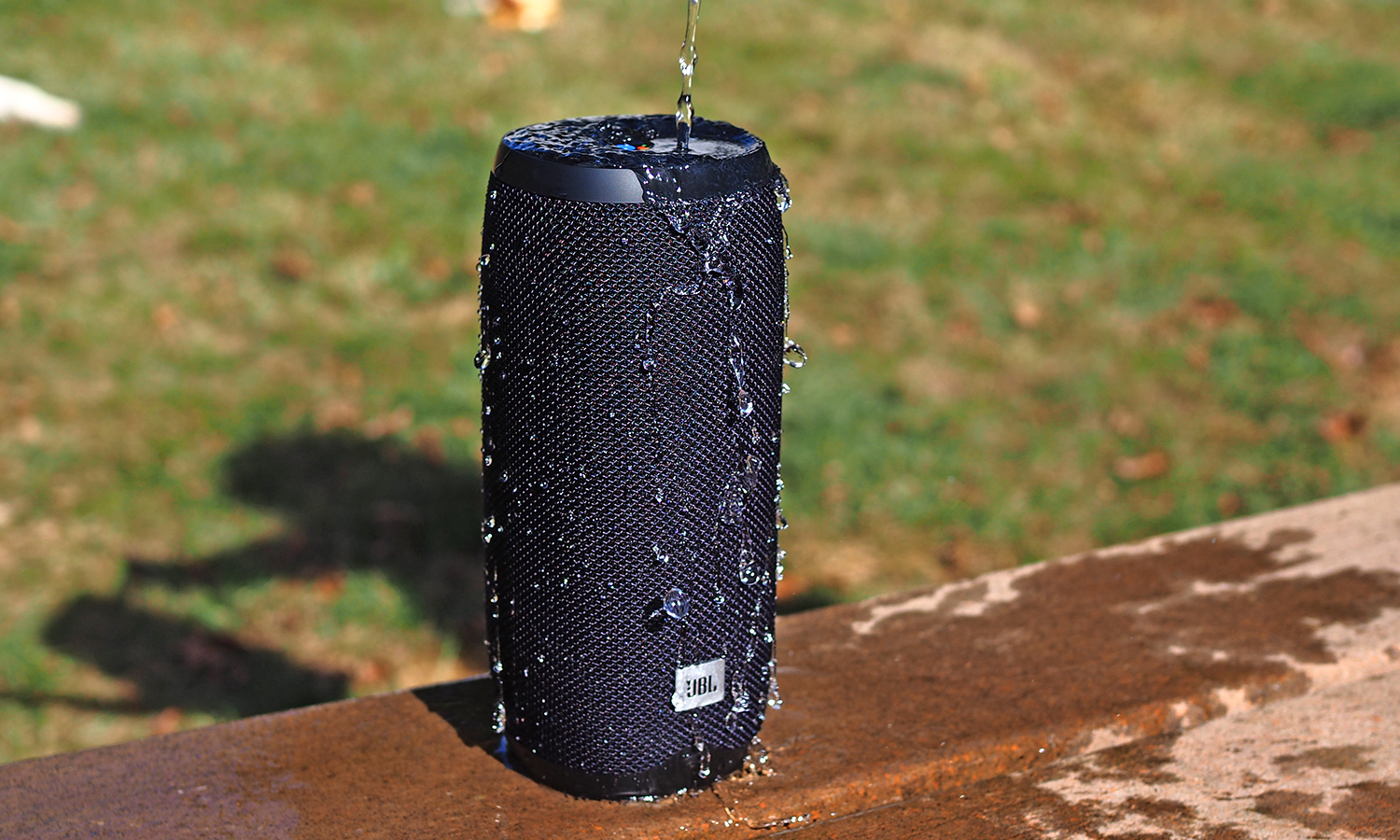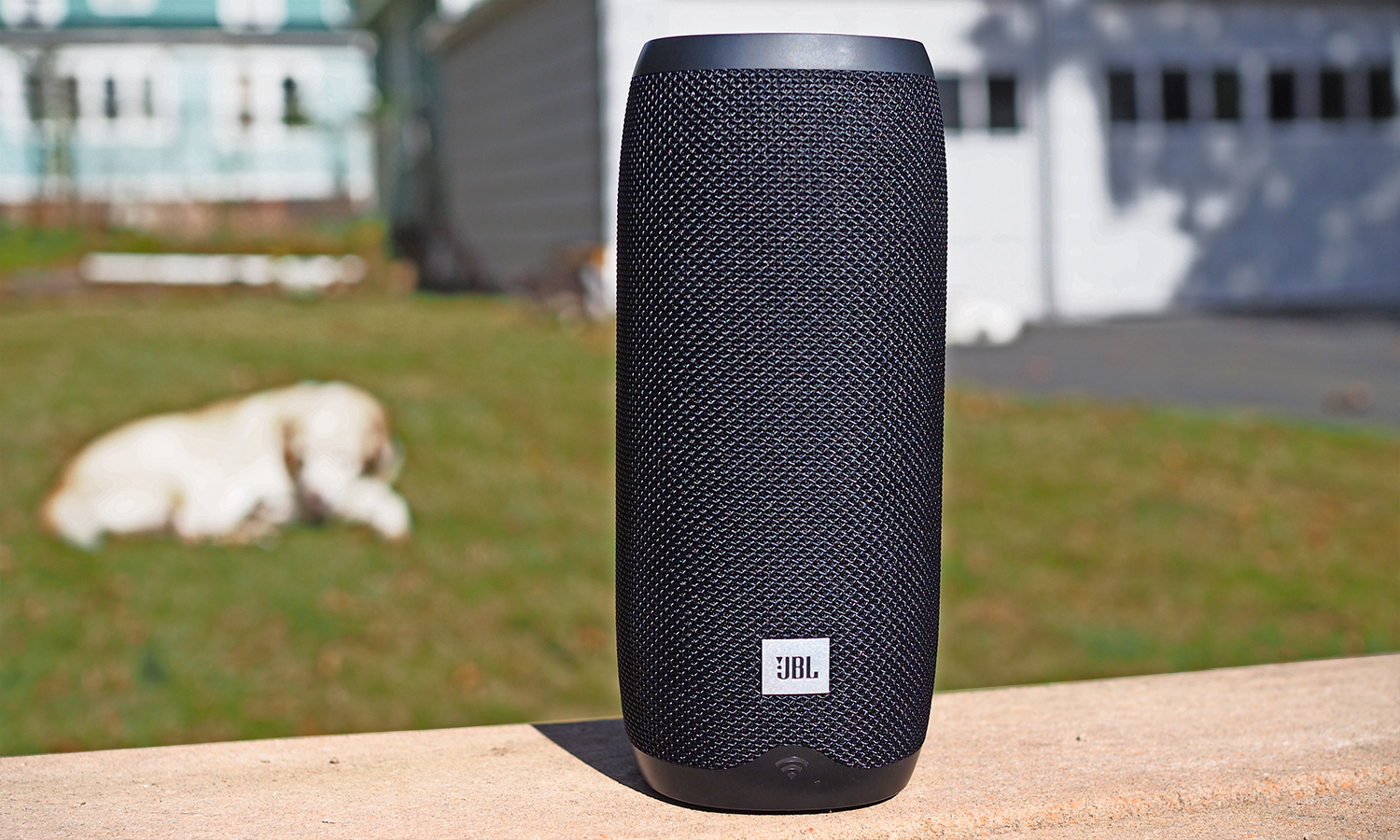Tom's Guide Verdict
The JBL Link 20 combines a great-sounding Bluetooth speaker with the smart functions of Google Assistant. Or most of them, anyway.
Pros
- +
Powered by Google Assistant
- +
Portable and rugged
- +
Well-balanced overall sound
Cons
- -
Can't make calls
Why you can trust Tom's Guide
After Amazon unleashed Alexa by allowing third-party speaker makers to include the virtual assistant in their models, it was only a matter of time before Google gave Google Assistant the same freedom. The JBL Link 20 is one such speaker, and it features something that no speaker Google makes can offer: a battery.
We put the JBL Link 20 to the test to see how it stacks up against the best smart speakers on the market, and if it supports all the best Google Assistant skills.
- The best waterproof speakers on the market
- Our picks of the best outdoor speakers
JBL Link 20 review: Price and availability
The JBL Link 20 is a few years old now, which unfortunately makes it harder to find than it once was. Fear not, though: you can grab it from Verizon for $130.
If that sells out, you could Musician's Friend, though this lists the JBL Link 20 at $230. Note that both of these links are for the black model; the white version is even tougher to find from a reputable vendor.
JBL Link 20 review: Design
The cylindrical 8.3 x 3.7-inch Link 20 follows the JBL portable speaker design profile, and looks like a slightly larger Charge 3. It's both taller and thinner than the Google Home. Available only in black, the Link 20 is wrapped in a tough mesh fabric and capped with black plastic on the ends.
The speaker includes minimal controls, which is appropriate considering that Google Assistant can help with most functions. On top, you'll find play/pause and volume buttons, as well as a Bluetooth pairing button.

There's also a physical button to activate Google Assistant, along with two microphones. When Google Assistant activates, four LEDs on the front pulse to show it's listening. On the front bottom, a Wi-Fi indicator shows when the speaker is connected to a network.
On the back, you'll find the power button, a battery life indicator and a mute button for the microphones. Near the bottom, the microUSB port for power and charging the battery is located beneath a flap, which helps make it waterproof. Unlike most JBL speakers, the Link 20 does not include auxiliary input.
The Link 20 is rated IPX7, meaning it can be submerged in water for up to 30 minutes without sustaining any harm, making the best Bluetooth speaker with smarts that can survive the elements.
I soaked it in a sinkful of water for 5 minutes, and it continued to play. (However, Google Assistant didn't respond when it was underwater; it likely couldn't hear me.)
JBL Link 20 review: Google Assistant

I found Google Assistant on the Link 20 to be as responsive as it is on Google Home, and it performed almost all of the tasks that Google Home does. It played music from Spotify, turned on my WeMo switch and played Stranger Things on my TV through a Chromecast.
It also delivered multiroom sound when grouped with my Google Home speaker through the Google Home app. However, the Link 20 couldn't make calls.
JBL Link 20 review: Sound quality
When playing music, the Link 20 delivers well-balanced treble, bass and midtones. That's a different sound profile from that of the Google Home, which features a very bass-heavy tone. The Link 20 also matches or exceeds the sound quality of similarly priced Bluetooth speakers, such as the $200 UE Boom.
On St. Vincent's "Los Ageless," the bass thumped, Annie Clark's vocals sounded full and the distorted guitars had good detail. While playing Dhani Harrison's "All About Waiting," the unit produced a much richer sound than the UE Boom. The song had more bass when played on Google Home, but I preferred the overall balance of tones on the Link 20.
The Link 20 also handled acoustic music well. The horns on Cannonball Adderley's "Autumn Leaves" were sharp, and the bass sounded warm. And Lindsey Buckingham's finger-picked guitar on Fleetwood Mac's "Never Going Back Again" were crisp.
The speaker can get plenty loud to fill most rooms. I measured it at a max of 90 decibels, and it reached that volume without distorting the sound.
JBL Link 20 review: Wireless and setup

The setup takes place through the Google Home app. The app walks you through the process of adding the speaker to your devices and connects it to your Wi-Fi network. The process went smoothly. You can also connect to the speaker via Bluetooth, which is handy if you want to listen to music services not supported by Google Assistant, such as Apple Music.
Through the Google Home app, you can also add the Link 20 to other Google Home speakers on your network to enable multiroom listening. However, the Google Home app doesn't offer ways to tweak the sound, such as adjusting bass or treble levels.
JBL Link 20 review: Battery
The Link 20's biggest advantage over Google Home is its portability. It includes a battery that powers the device for 10 hours, and in testing, I found that it could go at least that long before needing a recharge.
Keep in mind that, because Google Assistant is always ready, the unit doesn't shut itself off when you're not actively using it, so the battery will continue to drain unless you power it off. And Google Assistant works only when connected to Wi-Fi, so you won't get the benefit of the voice assistant when you're out and about.
JBL Link 20 review: Verdict
The JBL Link 20 outperforms the Google Home in almost every way. It sounds better, and offers portability and ruggedness. When using Google Assistant, it's responsive to commands, and I found only one thing it couldn't do: make calls. The benefits of the Link 20 will cost you, though — it's $70 more than Google's speaker. If all you want is a smart speaker to tell you the weather, the extra dollars probably aren't worth it. But if sound matters and you plan to take the speaker out and about, the Link 20 — or its smaller, less expensive sibling, the $149 Link 10 — is an excellent choice.

Michael Gowan is a freelance technology journalist covering soundbars, TVs, and wireless speakers of all kinds of shapes and sizes for Tom’s Guide. He has written hundreds of product reviews, focusing on sound quality and value to help shoppers make informed buying decisions. Micheal has written about music and consumer technology for more than 25 years. His work has appeared in publications including CNN, Wired, Men’s Journal, PC World and Macworld. When Michael’s not reviewing speakers, he’s probably listening to one anyway.
-
yantodiaz2003 Can I just simply play music via bluetooth without connecting to wifi or using Google home app? I mean I just want to listen to music via bluetooth and and turn of the Google home or Google assistance? Thanks.Reply -
glai5393 Does JBL link 20/300 pair with other non google assist JBL speakers like the flip 4 or charge 3?Reply

